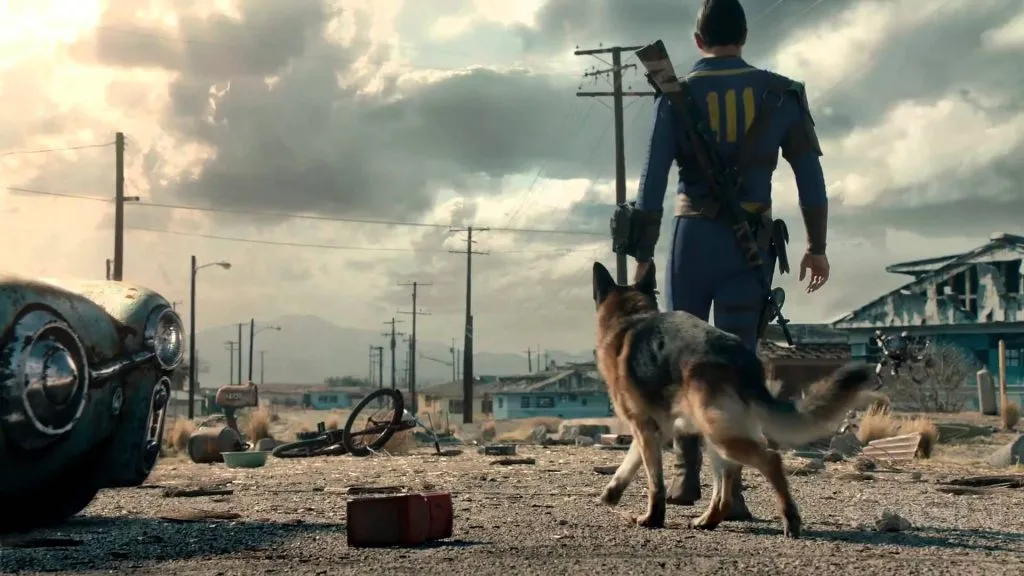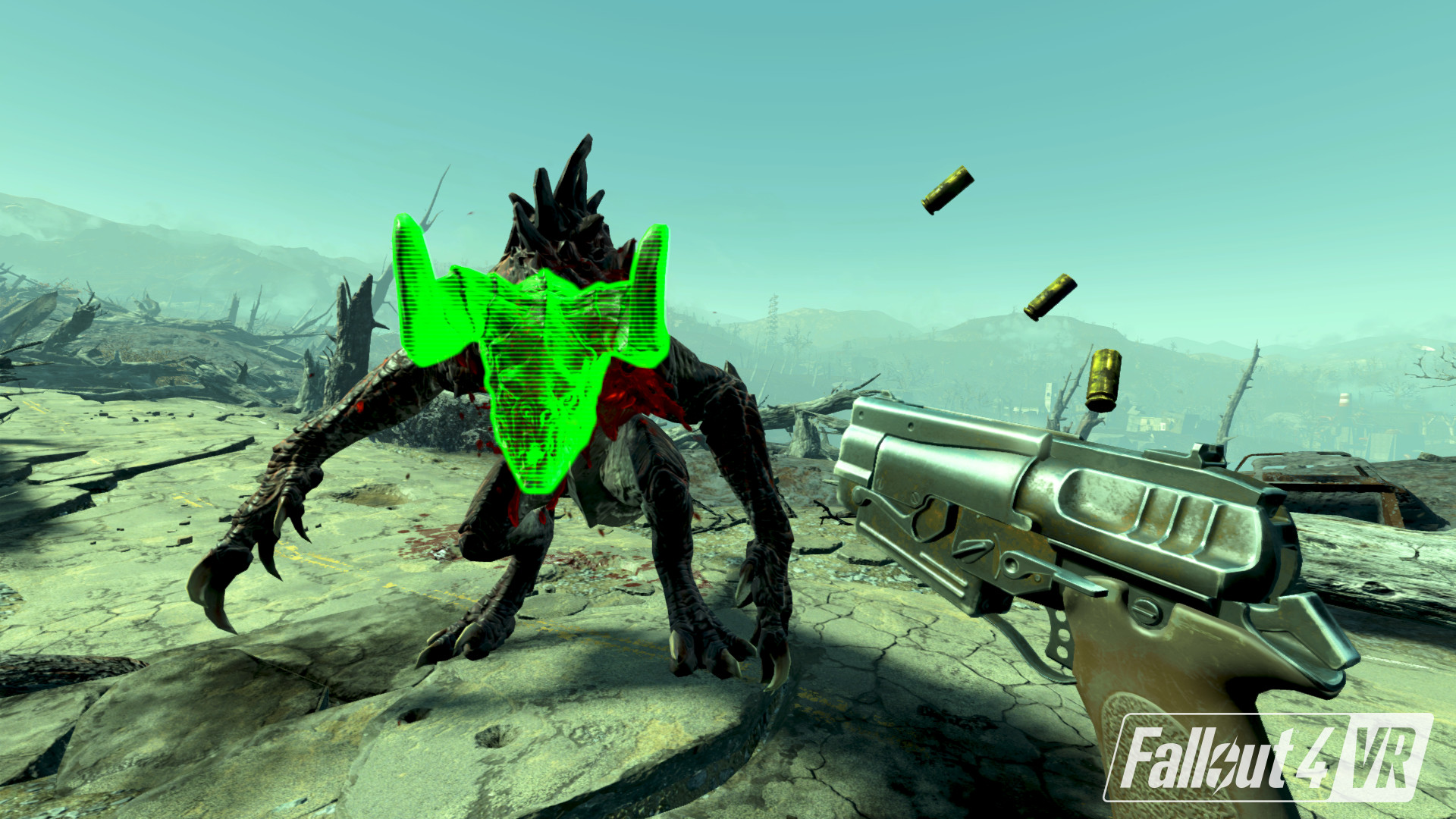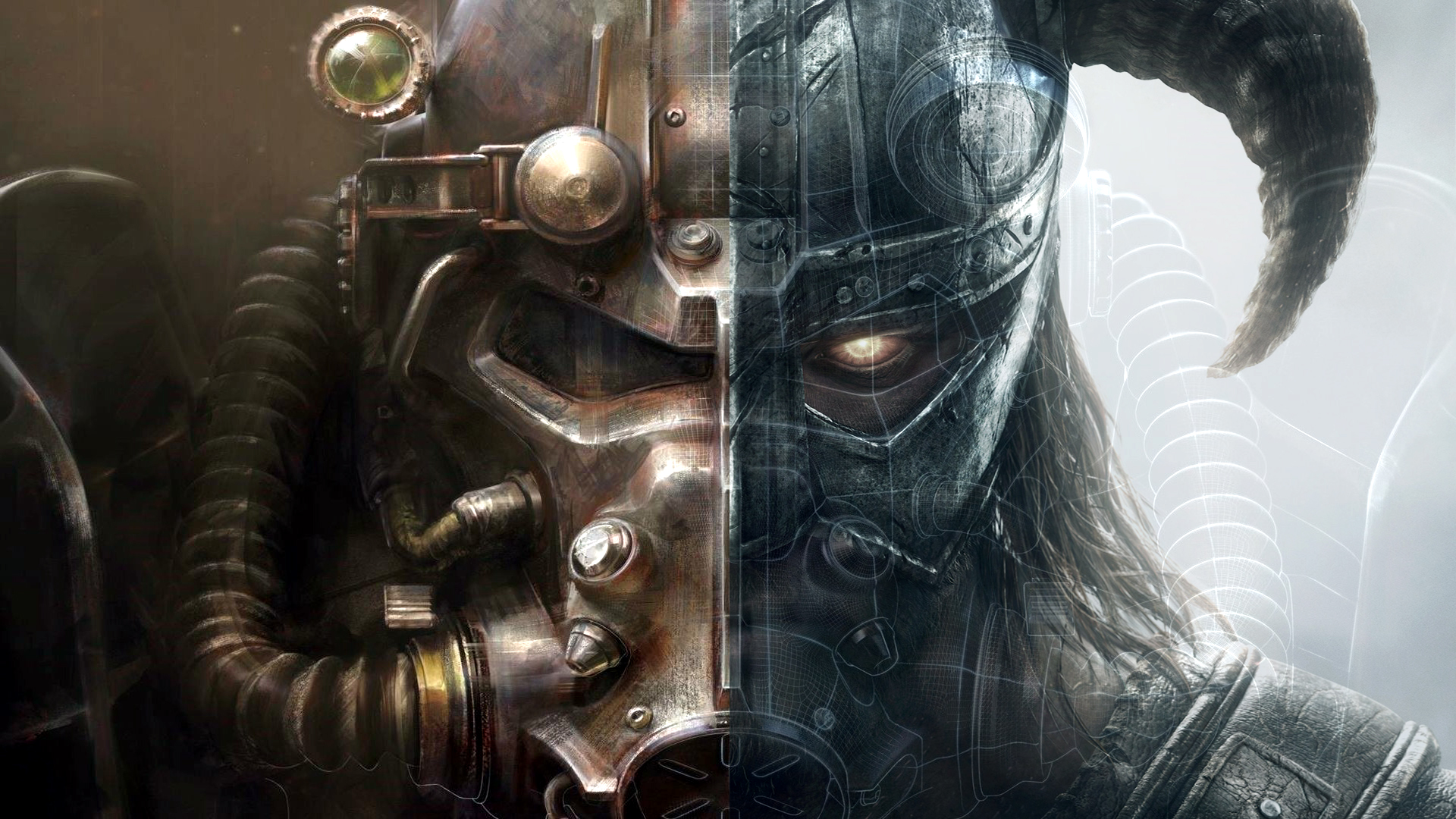Bethesda Softworks makes some of the most elaborate and expansive games in the world—and now they’re making them in VR. Last week, the publisher confirmed that Fallout 4 VR, The Elder Scrolls V: Skyrim VR, and Doom VFR will all release before year’s end on various platforms.
It was no big shock that they were coming; after all, we went hands-on with all three back at E3. Still, it’s surprising to see that all three are debuting around the same time, marking a huge push from Bethesda to assert itself in the still young consumer VR space this holiday season. And Fallout 4 VR and Skyrim VR are absolutely massive games, vastly larger than the average VR experience, because they’re the very same epic role-playing adventures already out for PC and consoles.
Why serve up these enormous games in VR? I asked Pete Hines, the publisher’s vice president of marketing and PR, at this past weekend’s QuakeCon expo outside Dallas, TX.
Open-World VR
“Honestly, a lot of it is down to how those games are built—they’re not level-based, they’re not carvable. You can’t really say, ‘Here, let’s take this chunk and make it a two, or three, or five-hour experience.’ They’re all one thing,” Hines explains. “So in looking at VR, the studio is like, ‘Well, that’s how we built it. Let’s see if it works as all one thing on VR platforms.’ And it turns out that it did. Obviously, we had to put a lot of work into UI, UX, and performance. You need people to understand how to interact with the game, and then performance-wise, make sure they’re not throwing up because you’re dropping frames. But we didn’t have to solve any of the, ‘Well, what are our quests, or the story, or characters, or stuff to do?’ Because all of that stuff was already done.”
Both games were already deeply immersive experiences on TVs and monitors, which is part of why they can potentially work so well in VR: they’re vast, incredibly detailed, and just a joy to explore. In fact, we’ve already picked out 11 places we can’t wait to explore in VR in both Skyrim VR and Fallout 4 VR, and that’s really just scratching the surface. Hines says that “live another life in another world” has been Bethesda Game Studios’ mantra from the start, and that virtual reality just elevates it dramatically for these open-environment games.
“VR takes that to another level, where you just have a much greater sense of place within this world. You’re up standing on a mountain and the snow is blowing. You just feel that on another level that you don’t get playing anything off of a monitor,” Hines says. “Somebody was asking, ‘For you, what really brings home those experiences?’ And honestly, it’s like when something huge is in front of you and you look at the top of it like this,” he adds, looking up to the ceiling.
“You’re not moving your mouse to do that, or a thumbstick. There’s just something about craning your neck up to look at the top of it that is just so much more of an ‘Oh shit’ moment than anything that you’ve had before,” Hines affirms. “Or playing Fallout and dropping your head to look at Dogmeat. It just makes him feel so much more like your dog, and so I think it’s just little stuff like that. Until you play it or experience it in VR, you don’t really have the same kind of appreciation for that sense of place in games like these.”
That said, one of the reasons that many from-scratch VR experiences are short is because it better fits the consumption habits of VR players. Fallout 4 and Skyrim can each be played for 100 hours apiece or more, which can be a lot easier to tolerate in long stretches on a screen rather than within a headset. Hines says “it’s possible” that people will play those games in VR for such spans, but he suspects it’ll be gradually over time instead of in marathon sessions.
“I think it’s going to be the kind of experience that folks are going to graze at,” Hines suggests. “I don’t see people binge-playing eight, 10, 12 hours for multiple days in a row like they did when those games first came out.”
Doom and Beyond
By contrast, Doom VFR is a bit closer to what we’ve seen in the VR space: it’s a more compact experience that’s been altered to better fit the VR play design. Developer id Software started with the heart of last year’s excellent Doom reboot, but that game was far too frantic and insanely paced to work in virtual reality. Well, at least without rampant motion sickness.
“[Fallout and Skyrim] from a pacing standpoint work just fine as a VR thing—there’s some stuff you need to do with how you move, and obviously the UI and UX,” Hines explains. “We didn’t have the problem of like, ‘Well, you’re moving too fast.’ [But] in Doom, you’re moving too fast. You simply can’t take a game where you’re that fast and aggressive, and mantling and jumping and double-jumping, and have anybody survive that for more than 35 seconds. Rather than making a 35-second game, they had to look at it like, ‘Well, how do we take that and translate it into VR?'”
Instead of constant movement and those wild, up-close-and-personal kill moves against demons, now you’ll teleport around (or nudge forward with a tap) and can execute “telefrag” maneuvers that let you teleport into a foe to finish it off. It “still makes you feel fast and aggressive,” Hines claims, but it shouldn’t make players feel queasy in the process. Additionally, some of Doom’s environments were reworked to better suit the VR experience.
“They were designed for somebody moving fast and mantling and jumping, which you’re not doing any of,” Hines explains. “We needed stuff that’s more purposeful for how you’re moving and working through Doom VFR.”
All three of Bethesda’s big VR games will ship within a one-month span, although they’re not all getting multiplatform launches from the start. Skyrim VR debuts first on PlayStation VR only, on November 17, with Doom VFR following on December 1 for both PlayStation VR and HTC Vive. Meanwhile, Fallout 4 VR will only hit HTC Vive first on its release date of December 12.
Why no Fallout 4 VR for PlayStation VR? Likewise, where is Skyrim VR for Vive? Hines couldn’t offer a definitive answer.
“I don’t know. We want to put it out on as many platforms as possible,” he said about Fallout 4 for PSVR, and suggested the same kind of scenario for Skyrim on Vive. “Whatever will work and be viable, we’re up for. This one is gonna be the first, and we’ll see what happens after that.”
Similarly, he wasn’t sure if any of the games would be compatible with the Oculus Rift via SteamVR at launch, but said he could check and get back to us. I’ve inquired about it since the interview with Bethesda PR and will update if we get a response.
I also asked why Skyrim VR is launching with all of the downloadable add-on content already bundled in, while Fallout 4 VR is not, and Hines says it’s all about the code they started with. “We had done some work already with Skyrim and the Game of the Year [Edition] that already had all of that stuff,” he explained. “It was more that that was the code base and starting point for doing the VR version, and that simply didn’t exist for Fallout. What we started with was just base game [for Fallout 4] and game of the year with all the DLC [for Skyrim], so that’s why those versions look like those versions.”
Will Fallout 4 VR eventually get that DLC as post-release content? “I don’t know,” says Hines.
Making an Impact
Ultimately, releasing all three of these large and visible VR experiences a couple weeks apart wasn’t some master plan from the start—that’s just how they all came together, claims Hines.
“It’s just how they lined up. We didn’t say, ‘Hey, let’s launch three games next year.’ What we do and take on comes out of what the studios are interested in, and they know better than anybody,” he says. “They know their tech, they know their platforms—so it was really a question of how long they were going to take, and how long they needed.”
And in the case of Bethesda Game Studios and the VR versions of both Skyrim and Fallout 4, we can probably thank Dallas’ own Escalation Studios. Bethesda acquired them earlier this year, and Hines says their work has been invaluable in getting those two games ready for release. “Without their help, I’m not sure if they’d make it out this year,” he affirms.
Debuting three large VR titles at the same time might seem like a risk for Bethesda, but Hines says their performance won’t necessarily dictate the company’s future in the space. “All of our studios are actively looking at and talking about what they want to do. Our focus right now is on these three, given that they’re all coming out this year,” he says. “But it’s something we’re actively involved in and working with. We just haven’t talked about any of our other going-forward plans yet.”
Disclosure: Bethesda provided flights and accommodations to the author to attend QuakeCon.


























